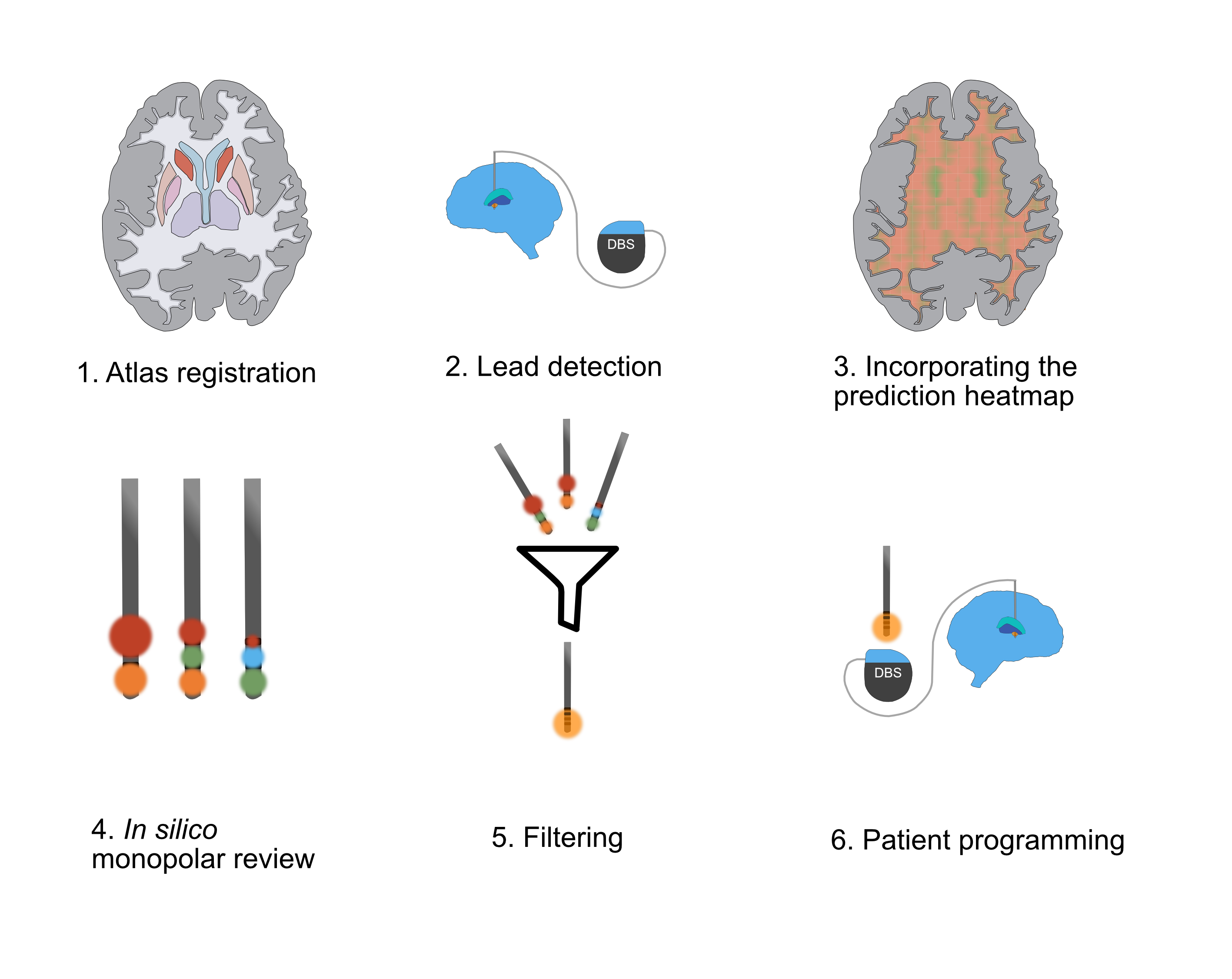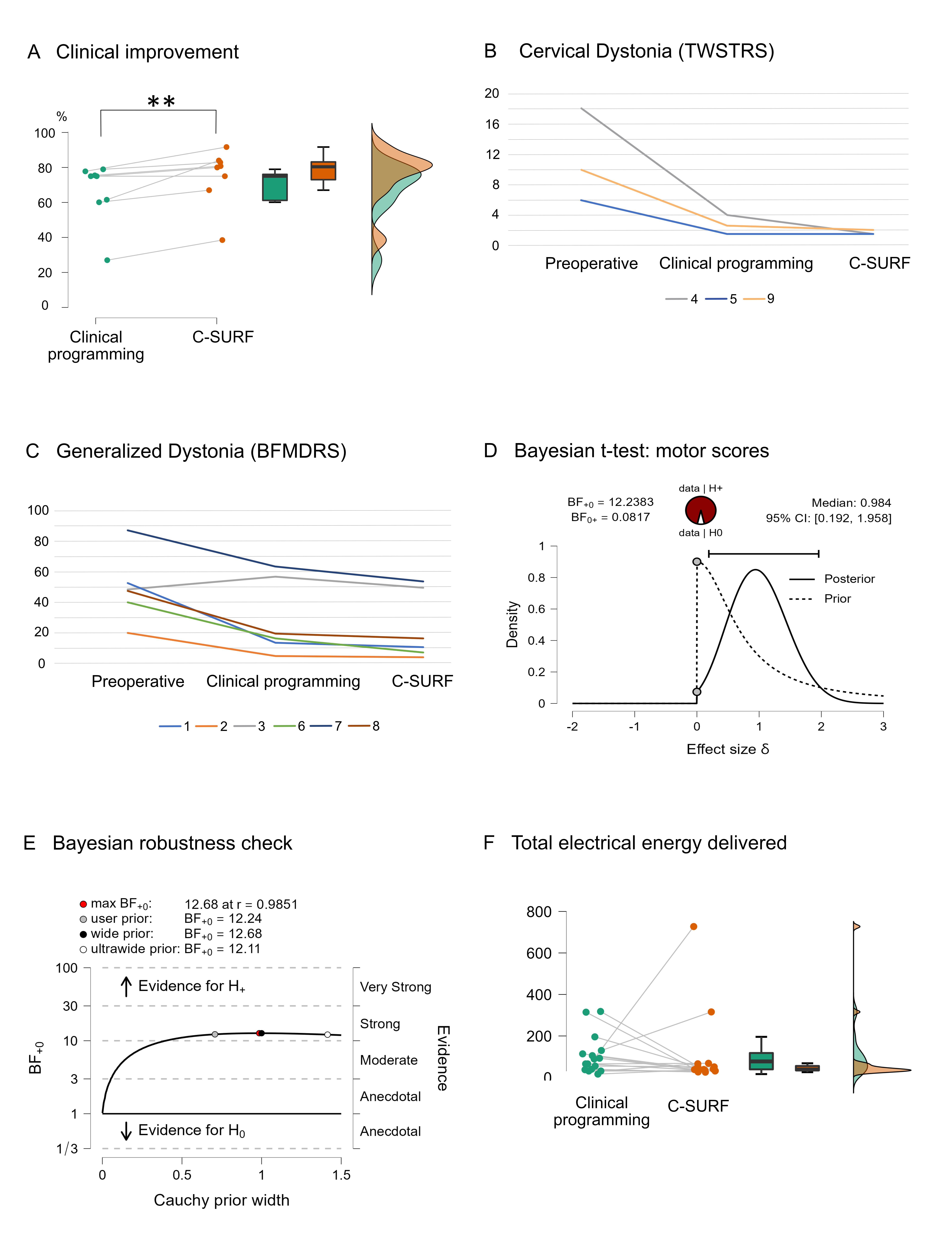Category: Dystonia: Clinical Trials and Therapy
Objective: To evaluate the clinical potential of a novel computer-guided prediction of optimal stimulation settings for pallidal DBS for the treatment of motor symptoms of dystonia.
Background: Deep brain stimulation of the internal globus pallidus is used to relieve motor symptoms in patients with dystonia. Due to delayed symptom control and lack of biomarkers for therapeutic response, the overall efficacy often falls short of full potential. In a previous study we mapped the pallidal region regarding clinical efficacy based on the neuroanatomical and clinical data of >80 dystonia patients. We now developed an algorithm (C-SURF) that can test in silico all different contact settings, and then predict the best possible stimulation settings for new patients. These are the results of a prospective feasibility trial evaluating this potential.
Method: We designed this study as an open-label feasibility study and screened a total of 10 patients, 8 of whom fully completed the study (5 females, mean age: 42,75, mean years since surgery: 8). Patients were switched to the stimulation parameters suggested by the computer after being examined in detail at baseline (the baseline program correspondents to the best clinical settings). After 14 days, another examination was performed to evaluate motor symptom control, side effects, and patient satisfaction. This was followed by a telephone interview at four months.
Results: Even in this the small test cohort superiority of this new approach to programming pallidal DBS in dystonia using probabilistic mapping over clinical programming was demonstrated.
The improvement of the stimulation program was 66.35%±17.4 for the clinical programming vs. 74.98 ±16.37 for the computer-guided settings (p=0.01, Cohens d: 1.22, 95%CI: 0.26-2.13). Both approaches had similar rates of power consumption and adverse events.
Conclusion: These results demonstrate that computer-assisted prediction of optimal stimulation settings in pallidal DBS is not only possible, but superior to current approaches. This holds tremendous potential for providing patients with the best possible symptom control while avoiding lengthy programming sessions or months of titration as currently required. Based on these promising results, we now initiated a large-scale randomized controlled trial (DIPS: https://clinicaltrials.gov/ct2/show/NCT05097001).
To cite this abstract in AMA style:
F. Lange, M. Reich. C-SURF: DBS programming using probabilistic maps as an efficient new approach to treat patients with dystonia: the results of a feasibility study. [abstract]. Mov Disord. 2022; 37 (suppl 2). https://www.mdsabstracts.org/abstract/c-surf-dbs-programming-using-probabilistic-maps-as-an-efficient-new-approach-to-treat-patients-with-dystonia-the-results-of-a-feasibility-study/. Accessed July 18, 2025.« Back to 2022 International Congress
MDS Abstracts - https://www.mdsabstracts.org/abstract/c-surf-dbs-programming-using-probabilistic-maps-as-an-efficient-new-approach-to-treat-patients-with-dystonia-the-results-of-a-feasibility-study/


